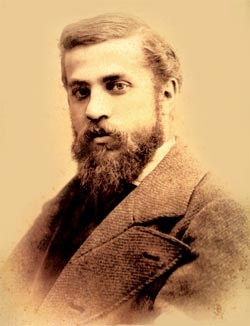
The Pope consecrated Gaudí's temple La Sagrada Familia
 |
In addition to tens of thousands of enthusiastic believers, around two hundred homosexuals and lesbians awaited the pope in the Catalan metropolis, who ostentatiously kissed in front of the passing convoy.
During his sermon, the pope reiterated that the church is against "any denial of life," referring to this year's legalization of abortion in the country, enacted by the government of José Luis Rodríguez Zapatero. Benedict XVI also called on countries around the world to support and protect the family as the inseparable union of a man and a woman.
Indirectly, he again condemned the recently legalized same-sex marriages in Spain.
In addition to homosexuals and lesbians, a number of young and older liberals protested against the presence of Benedict XVI in Spain, condemning the Roman Catholic Church for excessive conservatism. Even in traditionally Catholic Spain, the number of believers is declining, although nearly three-quarters of the population still identify with this religion.
On Saturday, the pope urged Europeans to open themselves to God and described the developments since the 19th century, during which anti-clerical and atheistic movements gained strength on the old continent, as a "tragedy." He also stated that faith must be renewed in response to the secularism that "exists in France and in the Czech Republic, but also in Spain."
By consecrating the cathedral, Benedict XVI completed the procedure for dedicating the building to its permanent state. According to the church's beliefs, only by consecrating the church are prayers better heard, as the place is "inhabited by God's presence."
The basilica officially became a basilica 128 years after the first stone was laid in 1882, where traditional masses, including the Eucharist, which is the central sacrament of the church and the center of its worship, can be celebrated. The building is still not completely finished - it could be completed, according to some estimates, by 2026, which would mark the centenary of Gaudí's death.
Benedict XVI, who began a two-day visit to Spain on Saturday in the pilgrimage city of Santiago de Compostela, praised Gaudí's faith and his strong determination, with the help of many others, to create such a miracle as the temple dedicated to the Holy Family. According to the pope, the architect, who is expected to be beatified in the future, managed to combine the tradition of great cathedrals with new creativity. The temple is among the most visited monuments in Spain.
The English translation is powered by AI tool. Switch to Czech to view the original text source.
0 comments
add comment
Related articles
0
31.10.2025 | The Barcelona Sagrada Família has the tallest church tower in the world
0
14.02.2025 | The construction of the Sagrada Família temple will enter its final phase this year, builders said
0
09.12.2021 | In Barcelona, the tallest tower of the Sagrada Família basilica was ceremoniously unveiled
0
19.04.2011 | The Sagrada Familia Cathedral in Barcelona was evacuated due to a fire
0
06.11.2010 | La Sagrada Familia will be consecrated on Sunday by the Pope himself










